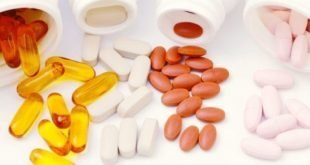 Porridge can be harmful.
Porridge can be harmful.
Rice and buckwheat, peas and millet all cereals useful in different ways. Nutritionists said, what are the most nutritious and rich in micronutrients, and what better not to overdo it.
Benefits and harms of cereal
Porridge is the perfect side dish and a great dish with a rich set of needed nutrients, vitamins and minerals.
Hearty porridge provides the body with energy for long hours and lies well on the stomach. With proper cooking skills and recipe any mess you can make stunning, but without them it turns out more than edible thing that is easy to prepare. Any taste defects can easily kompensiruet combination of porridge with meat, milk and other additives.
In some cases, associated with the disease, the porridge becomes almost the only food that man can eat. However, everything is good in moderation.
Like other things around us, the mess can be both medicine and poison.
For a long time, eating only porridge, you will most likely lose health because of the inadequacy of the diet. Even porridge from different cereals cannot replace an entire meal.
In addition, some cereals and legumes contain substances that can have a negative impact on the body. It is very important to know which cereals can be eaten without restriction and which are not.
From the point of view of nutrition porridge is very far from the ideal food. The basis of most cereals are cereals (with the exception of pea). In cereals a lot of starch. In the body starch is easily and quickly converted into glucose which enters the bloodstream. Excess glucose is quickly deposited in body fat and is particularly dangerous for people with diabetes.
The glycemic index
To indicate the effects a particular food on blood sugar levels scientists have introduced the glycemic index (GI) foods. The lower the GI, the more preferred product for the common man. The exceptions are athletes who need foods with a high GI for quick recovery during and after the competition.
The glycemic index of pure glucose is 100. In comparison, determine the GI of all other products.
The glycemic index Status
10-40 Low (a useful product)
41-70 Average (moderate product)
71-100 High (harmful product)
The glycemic index of one and the same product varies depending on the region, weather conditions during growth and other indicators. In addition, GI can be greatly increased by the use of additives. For example, milk increases the GI of cereals 3-4 times. Influence and formulation.
These values are averages, and may vary for a specific product and is valid only for cereals with no additives.
Best cereal on the glycemic index:
Cereal Glycemic index
Barley 20-30
Pea 20-30
Buckwheat 50-55
The worst cereal on the glycemic index:
Cereal Glycemic index
Rice 50-70
Semolina 65-80
Corn 70-80
Oat and millet porridge with Ki in the range of 40-65 located approximately in the middle of the rating and can be classified as useful or harmful from the point of view of the GUY.
A large scatter of GI due to prior handling product and variety of the same grain. For example, brown and wild rice a GI of about 50, and the index of white rice, steamed, close to 70.
Separately the semolina. Less processing — more use, and semolina is the best proof of that. Presenting a byproduct of the production of wheat flour, the grain not only has a high GI and is poor in terms of vitamins and minerals, but also interferes with the absorption of vitamin D, iron and calcium. The lack of the latter weakens bone tissue.
More expensive exotic cultures like quinoa have advantages from the point of view of chemical composition, but the difference in price is not allowed to call these products available to the public, and therefore we did not include them in rating.
Protein and calories
Cereals are a source not only of carbohydrates, plant fibers, fats, vitamins and minerals, but also protein. Vegetable proteins are inferior to animal amino acid composition and digestibility, but still useful and necessary to our body.
In average 100 g of cereal contains about 10 grams of protein.
Pay special attention to Fig. Though this culture and extremely popular, but the content of protein in raw form it is inferior to almost all cereals: 7 g of protein per 100 grams of pure rice versus 9-11 g per 100 g of cereals and other crops.
100g of peas contains about 20 grams of protein, so it and other legumes are often called meat substitutes.
When preparing a mass of grains is greatly increased because of the water. The calorie content of all cereals is about the same and is 100-140 kcal per 100 g
Porridge — our strength
Obviously the ideal cereal there is and can be. But now stores offer us incredible diversity of cereals, legumes and other crops. Everyone can make for themselves a set of optimal products based on budget, taste preferences, objectives and meets these objectives of the diet.
© 2017, paradox. All rights reserved.





